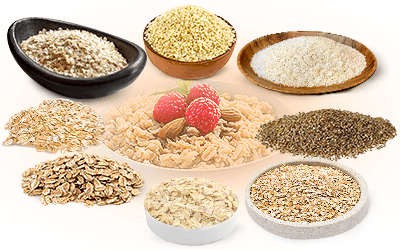Saw palmetto, or Serenoa repens, is a small palm endemic to southeastern United States. It can be found adorning wild spaces all over Florida, but aesthetic value isn't all that this resilient plant contains. Its vast health benefits have been known for hundreds of years by Seminoles, Bahamians, and other native populations of the Americas and continue to be a useful alternative medicine to this day. The berries of saw palmetto are used medicinally, mainly for treating prostate issues. However, the benefits of this plant extend beyond male reproductive health.
1. Immune Function
Saw palmetto berries were used by indigenous Seminoles and Bahamians to treat a form of fish poisoning.
The berries of the saw palmetto contain certain polysaccharides that have been found to reduce inflammation and strengthen the immune system.1 This function serves as a way to battle colds, coughs, sore throat, asthma, and even bronchitis. The improved functionality of the body can increase energy and mental well-being.
2. Hormonal Balance
Saw palmetto is found to balance key hormones in the body, which prevents signs of aging and help maintain energy and liveliness. It balances testosterone levels, which is believed to help build muscle mass.2 Other plant steroids in saw palmetto are found to pump up your body, not only in the gym, but also in the bedroom, making it a prized libido booster. This is because testosterone is a sex hormone, as is estrogen, both of which are stimulated by the consumption of saw palmetto.
3. Hair Strength
There have been several studies among men outlining the potential for saw palmetto to help hair grow more abundantly.3 One study observed healthy men with androgenic alopecia, and after only six months, there was a significant improvement in their hair quality. Although there isn't extensive scientific evidence, men with pattern baldness swear by its beneficial effects.
4. Enlarged Prostate (Benign Prostatic Hyperplasia)
As noted, this is the most popular and well-studied use for saw palmetto. Benign prostatic hyperplasia (BPH) is when the prostate becomes enlarged and causes frequent urination, dripping, difficulty urinating, and the constant need to urinate. In some studies, saw palmetto has been found to help shrink down the inner lining of the prostate, helping it to resume normal functioning and remove pressure from the urinary tract.4,5 There is also some evidence that outlines its ability to treat prostate infections, although this research is not extensive.
Many wouldn't imagine that such a widely abundant plant has such valuable uses, but those who have had a chance to benefit from it know its medicinal value well. Saw palmetto is typically found as whole, dried berries as well as tablets, extracts, and capsules. According to peer reviewed literature, the standard daily dose is of 320 milligrams for treating BPH, but it is strongly recommended to talk to a doctor for a personalized dose. Baldness, loss of libido, sickness, or prostate issues should not be factors that affect overall health; a high-quality supplement of saw palmetto supplement can help.
Sources
- Biomedical Journal of Scientist & Technical Research, The Use of Serenoa Repens (Saw Palmetto) in Hair Care Products, 2018
- BJU International, Serenoa repens monotherapy for benign prostatic hyperplasia (BPH): an updated Cochrane systematic review, 2012
- Investigative and Clinical Urology, Serenoa repens for the treatment of lower urinary tract symptoms due to benign prostatic enlargement: A systematic review and meta-analysis, 2021
- MedlinePlus Herbs and Supplements, Saw Palmetto
- NCCAM Herbs at a Glance, Saw Palmetto
- University of Maryland Medical Center, Saw Palmetto
Footnotes:
- World Journal of Urology. (2019). The effect of hexanic extract of Serenoa repens on prostatic inflammation: results from a randomized biopsy study. Retrieved March 29, 2022, from: https://link.springer.com/article/10.1007/s00345-018-2409-1
- The Journal of Sexual Medicine. (2020). HP-4-1 Improvement of Sexual Functions in Men With Benign Prostatic Hyperplasia With Long-Term Use of the Serenoa Repens Extract. Retrieved March 29, 2022, from: https://www.jsm.jsexmed.org/article/S1743-6095(20)30342-8/fulltext
- Journal of Cellular Physiology. (2018). Serenoa repens and N-acetyl glucosamine/milk proteins complex differentially affect the paracrine communication between endothelial and follicle dermal papilla cells. Retrieved March 29, 2022, from:https://onlinelibrary.wiley.com/doi/abs/10.1002/jcp.27491
- Prostate.(1998). Effects of long-term treatment with Serenoa repens (Permixon) on the concentrations and regional distribution of androgens and epidermal growth factor in benign prostatic hyperplasia. Retrieved March 29, 2022, from: https://pubmed.ncbi.nlm.nih.gov/9759701/
- Research and Reports on Urology. (2018). Inflammatory mechanisms and oxidative stress in prostatitis: the possible role of antioxidant therapy. Retrieved March 29, 2022, from: https://www.ncbi.nlm.nih.gov/pmc/articles/PMC6149977/






